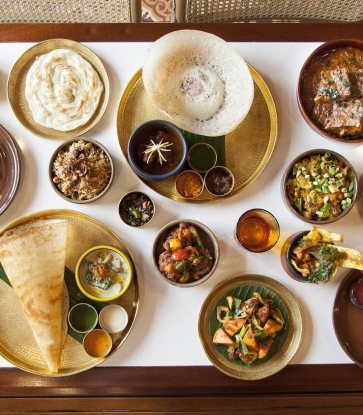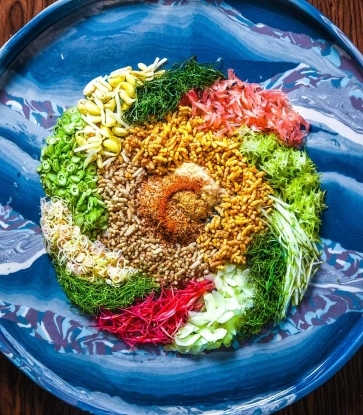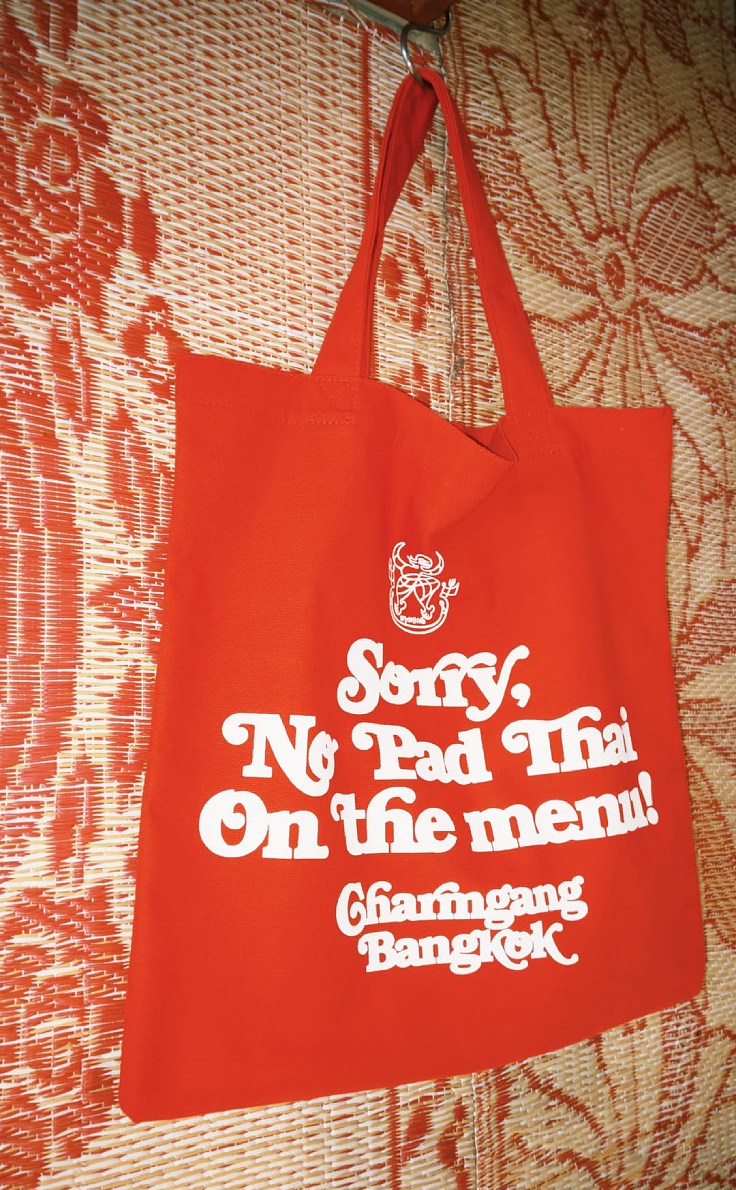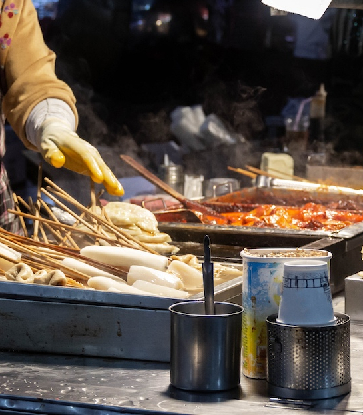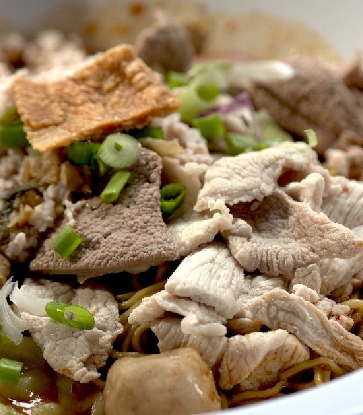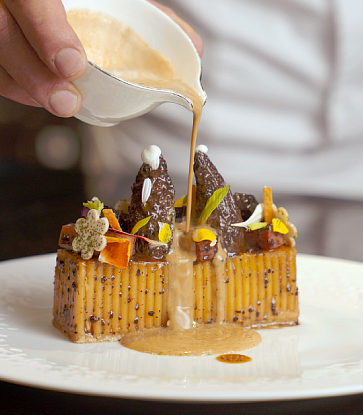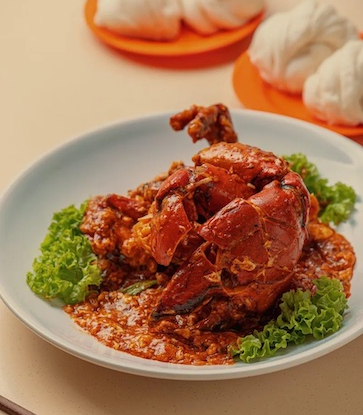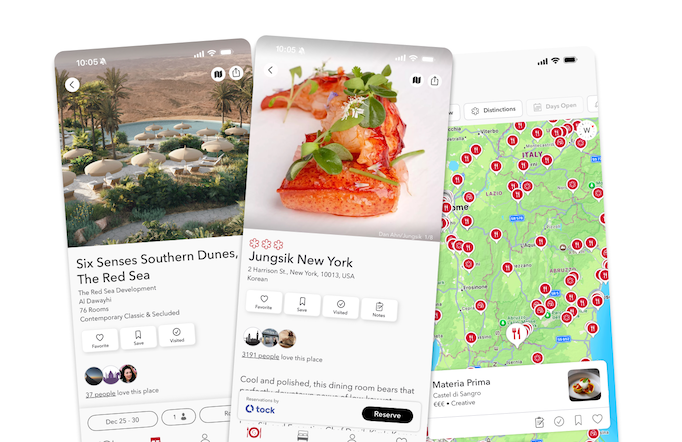Anyone who knows Da Nang well will tell you that there’s more to the city than meets the eye. Just as the mini metropolis’ luminescent bridges eclipse pre-war architecture and its polished skyscrapers overshadow an ancient citadel, Da Nang’s varnished veneer veils centuries of history.
Mi Quang, Da Nang’s iconic noodle dish, also contains multitudes. At first glance, it presents like many other noodle dishes in Vietnam, with broth, veggies, protein and a crunchy accompaniment (in this case, a rice cracker). But when you sink your teeth into the origins of the dish, a complex story unfolds.
“When I started food blogging 15 years ago, I needed a local hero dish,” says Da Nang native Summer Le, founder and executive chef of Nén Danang, a MICHELIN-selected restaurant in The MICHELIN Guide Vietnam 2024, which holds the country’s first MICHELIN Green Star. She grew up eating mi Quang every week, and her mother would often cook the dish for visiting friends. “I picked mi Quang [as the hero dish] because this really is our dish. It reflects the lifestyle and the philosophy of Da Nang and Quang Nam.”
Mi Quang takes its name from Quang Nam, the province that Da Nang was part of until municipal independence in 1997. This autonomy helped Da Nang become a prosperous city, but this was a poor corner of Vietnam throughout much of its history. Unlike the north and the south of the country, central Vietnam never enjoyed the fertility bestowed by great river deltas – and brutal typhoons regularly battered these coastal lowlands. Unlike Hanoi and Ho Chi Minh City, Vietnam’s two major cities, Da Nang has never achieved capital city status – and the wealth that this bequeaths.
These divergent histories are evident in the cities’ flagship noodle dishes. The hearty broth of pho bo developed in Hanoi because its urban elites demanded a steady supply of beef. Hu tieu Nam Vang, which requires copious amounts of bone marrow, dried seafood, pork cuts, boiled shrimp and garden greens, thrived in Ho Chi Minh City due to the plentiful ingredients sourced from the Mekong Delta.
Until recently, Da Nang never enjoyed the culinary luxuries afforded by status, stability and abundance. As a result, the ingredients in mi Quang are “versatile and flexible,” says Le. This is perhaps clearest in the protein, which might be shrimp, fish, eel, pork, chicken, frog, jellyfish or a haphazard mix. Traditionally, says the chef, mi Quang didn’t follow a strict recipe; it was simply served with what was available.
“Our history and harsh conditions have taught us to appreciate what we have,” she says, “Mi Quang reflects this philosophy: taking humble, limited resources and transforming them into something delicious and meaningful.”

A key characteristic of mi Quang is the versatility of its meat and seafood; another is that it contains very little broth. According to Peter Cuong Franklin, founder and head chef of the one MICHELIN Star Ănăn Saigon in Ho Chi Minh City (awarded for two consecutive years in 2024), this trait also reflects Da Nang’s humble history. “When there’s only a little liquid, you can serve more people with less money.”
Franklin was born in Da Lat and now lives in Ho Chi Minh City, but like Le, he grew up with mi Quang because his mother was from Quang Nam. “As a kid, I’d eat [mi Quang] almost every day,” he says, laughing. He agrees that the dish’s adaptability defines it, and he uses the noodles as an example. An unusual feature of mi Quang is its name: mì means wheat noodles in Vietnamese, yet the noodles in the dish are made from rice. For him, this quirk might reflect how noodles first arrived in central Vietnam many centuries ago.
“We know that Da Nang and Hoi An [in Quang Nam] were important trading hubs,” he explains. "We also know that noodles are Chinese. In Vietnam, there’s a lot of rice, but we didn't grow wheat. It’s likely, then, that the concept of wheat noodles was first introduced by Chinese traders 400 to 500 years ago, and that local people adapted the noodle based on what was available here.”
Hoi An (and, to a lesser extent, Da Nang) was an important centre of trade from the 16th to 18th centuries, evidenced by the town’s so-called Japanese Bridge, Chinese temples and European houses. But Franklin suspects that some of the ingredients of mi Quang even predate Quang Nam’s mercantile heyday.
Until 1471, Quang Nam was part of Champa, a collection of kingdoms that cultivated trading and cultural connections with much of Asia — most crucially, India. The millennium-old Hindu ruins of Mỹ Sơn Sanctuary, some 40 km southwest of Da Nang, are a testament to India’s cultural and religious impact on the area. Contact with the subcontinent also brought turmeric, which was originally used to bronze the rice noodles, says Franklin. Curiously, it may be that hundreds of years ago, a spice brought to Champa from India coloured the white rice noodles to make them look more Chinese.

“When you dig deep,” says Tuyet Pham, founder of the MICHELIN-selected Nu Đồ Kitchen, “you can always see Champa connections in the culture of central Vietnam.”
Pham is interested in mi Quang’s ancient history, but is also concerned about its future. She grew up in a small town in Quang Nam and learned to cook mi Quang from her father, who peddled the dish from makeshift roadside eateries. When Pham participated in MasterChef Vietnam in 2015 (she came second), this was the dish she presented to the organisers. She opened Nu Đồ Kitchen in 2019 to continue the legacy of her father, who could never quite make ends meet. “He opened a few mi Quang places, but they never lasted more than a few years,” she laments.
With Nu Đồ Kitchen, Pham decided to do things differently. Most mi Quang eateries in Da Nang charge less than 45,000 VND (US$2). Pham chose to source quality ingredients, spend time on the broth, and charge twice as much. In other words, she harnessed mi Quang’s superpower – adaptability – to keep up with Da Nang’s increasing prosperity. Pham worries that Da Nang’s street food culture is under threat, as many chefs in the city are considering closing up shop, citing hard work with minimal reward.
“This reminds me so much of my dad, who just couldn’t seem to make enough money from a cheap dish,” she says. “I want to support the future of mi Quang by showing that it can be made with quality ingredients – and that people will pay more for it.”

Where to find mi Quang?
Mi Quang may be found on countless menus across Da Nang, but a select few establishments — each with a distinct dedication to this iconic dish — have been spotlighted in The MICHELIN Guide Hanoi, Ho Chi Minh City & Da Nang 2024. These are the ones we think are worth your time.Mì Quảng 1A
Recommended, MICHELIN Guide Hanoi, Ho Chi Minh City and Da Nang 2024Classic mi Quang served with the more traditional toppings: shrimp, chicken and pork.
Address: 1A Hai Phong, Da Nang.
Mỳ Quảng Sứa Hồng Vân
Bib Gourmand, MICHELIN Guide Hanoi, Ho Chi Minh City and Da Nang 2024This eatery proves that almost anything can go into mi Quang with the ingredient it’s known for: jellyfish.
Address: 59 Le Hong Phong, Da Nang.
Nu Đồ Kitchen
Recommended, MICHELIN Guide Hanoi, Ho Chi Minh City and Da Nang 2024Elevated mi Quang cooked up by MasterChef Vietnam 2015 star Tuyet Pham and served in a garden courtyard.
Address: 11/1 Luu Quang Thuan, Da Nang.




